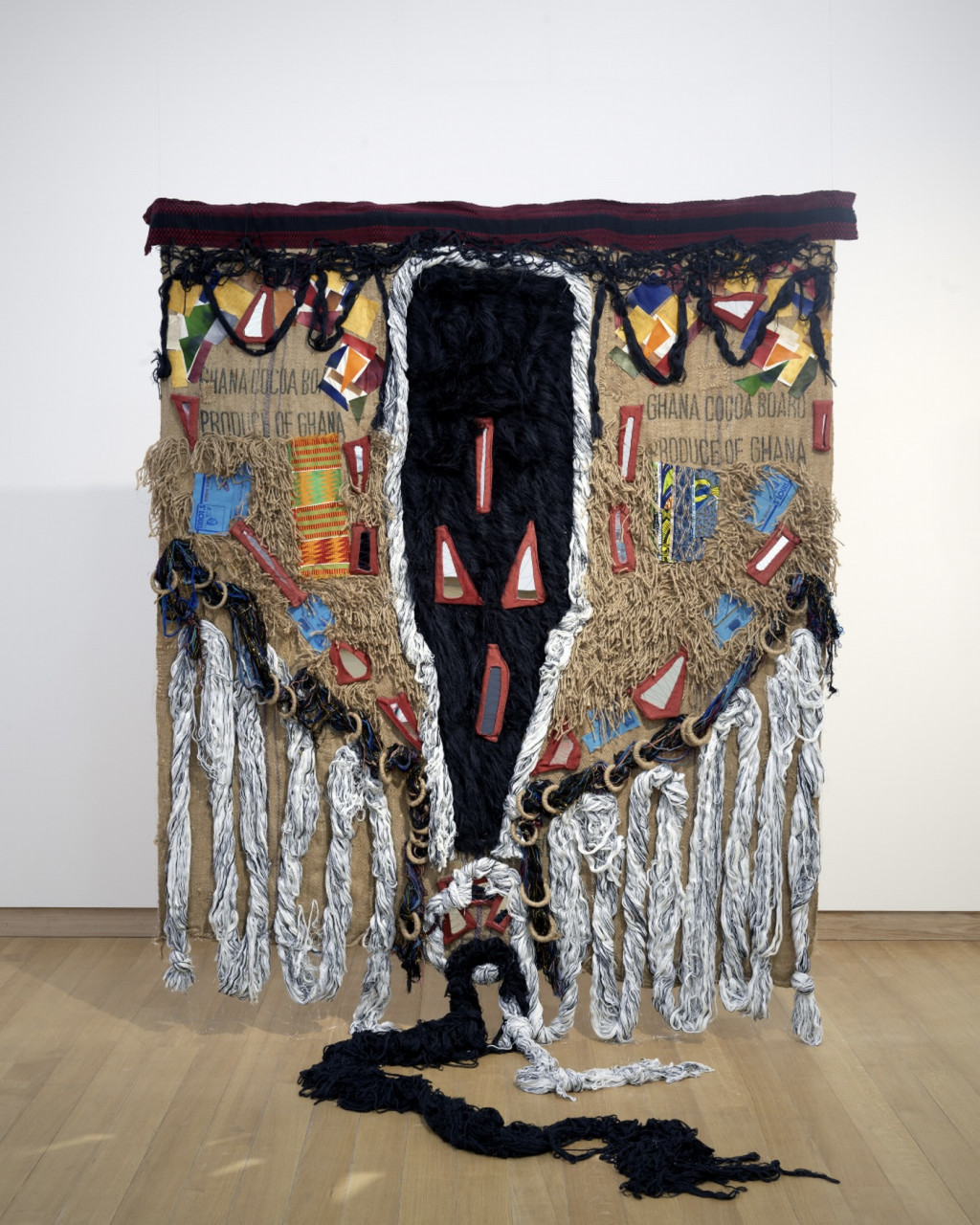LET TEXTILES TALK
Six tapestries unravelled
Exhibition — Nov 13, 2021 until May 1, 2022
From 13 November, the Let Textiles Talk exhibition shows six colorful tapestries that make you think. Together with the new curator of design, Amanda Pinatih, you will unravel the appeal of these barely seen carpets.

In 1951, the Egyptian architect and educator Ramses Wissa Wassef, and his wife Sophie Habib Georgi, embarked on an experiment about creativity that would attract attention from prominent figures in the art world, such as former director of the Stedelijk Willem Sandberg, artist Etel Adnan and philosopher Jean Paul Sartre. Wassef intended the experiment to prove that creativity is innate and anyone can practice art. Discouraged by 20th century urban culture’s monotonous mass production and lack of creativity, he set out to teach children who were ‘uninhibited’ and isolated from ‘modern civilization’ to weave tapestries.
In Let Textiles Talk, the Stedelijk combines the tapestries with works by Etel Adnan, Karel Appel, Dorothy Akpene Amenuke, Sheila Hicks, Jean Lurçat and others. These works take us on a transnational journey through history, raising questions about how the tapestries and their makers have been contextualised over the years, and proposing perspectives from which we can view the experiment today.
A group of Egyptian children, (textile) artists from all over the world and a former museum director tell their personal stories. These stories have been strung together by Amanda Pinatih into a mosaic story about textile art, creative expression, and revaluation of the collection.

“The six tapestries seem to be an anomaly in the collection of the Stedelijk. It is a typical example of how, in the past, European institutions collected art from outside Europe and North America as something ‘naive’ and ‘primitive’. Artists derived inspiration from the creativity and skills of traditional craftsmanship. In this exhibition I invite the viewer to look at these works, but this time through a different lens. What elements impress you most?”
“In the Stedelijk of today, research occupies a more prominent position than in the past. The collection of the museum, and its exhibition history, are also the subject of close examination. Exactly why Sandberg purchased these tapestries is shrouded in mystery and can be explained by looking at the context of his time.”


FOLLOW AMANDA’S QUEST
On her magic carpet, curator Amanda Pinatih flies through the depot and archive in search of the secrets of the six Egyptian tapestries. Follow her blog on Stedelijk Studies where she reports her findings and discoveries. She unravels these threads in the Let Textiles Talk exhibition, and offers a personal commentary on the work in the galleries for additional food for thought.
